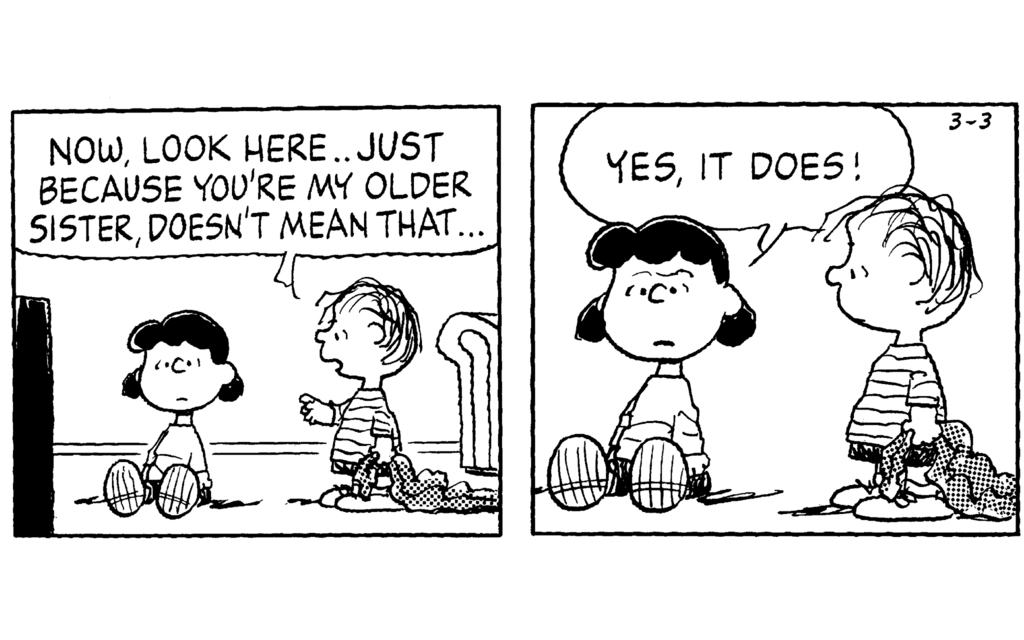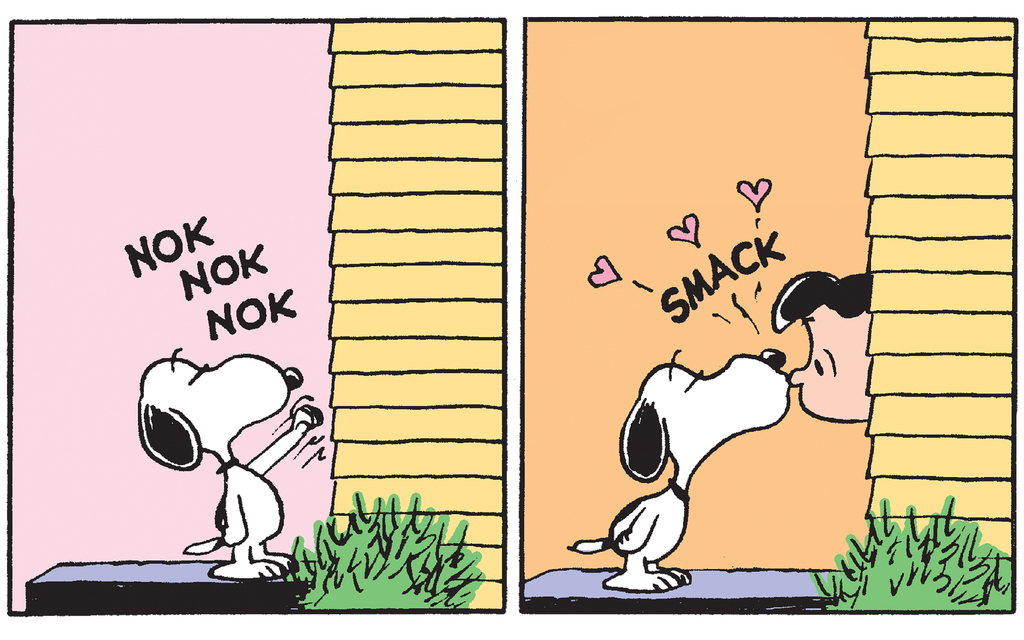Peanuts by Charles Schulz for November 18, 1960
Transcript:
Linus and Lucy are walking along the grass. Lucy looks down and says, "Well, look here! A big yellow butterfly!"<BR><BR> They both stop to look at the butterfly. Lucy continues, "It's unusual to see one this time of year unless of course, he flew up from Brazil...I'll bt that's it!"<BR><BR> They kneel to take a closer look. Lucy says, "They do that sometimes you know...They fly up from Brazil, and they...." Linus exclaims, "This is no butterfly... this is a potato chip!"<BR><BR> Lucy looks closer at the ground and exclaims, "Well, I'll be! So it is! I wonder how a potato chip got all the way up here from Brazil?" Linus looks at the reader in a quizzical manner.<BR><BR>













Actually, in addition to being funny, this cartoon has a very pointed message.
In the first panel, Lucy makes an erroneous observation. Then, she uses that observation to draw an equally-erroneous conclusion and, in the second and third panels, she buttresses her erroneous conclusion with additional ‘facts’ and observations. Then, when Linus, in the third panel, points out the fallacy of the original observation, she uses all the fallacious ‘facts’ and observations to buttress a new and equally-fallacious conclusion.
This phenomenon is seen quite frequently in American politics, these days, in the form of people who make make statements, completely unsubstantiated by science, fact or research, and then draw equally-unsubstantiated, often-absurd conclusions from them. When the fallacies inherent in their assumptions are pointed out, they simply shift gears and use the ideas and ‘facts’ inferred from their ‘conclusions’ to draw other, equally-fallacious conclusions.